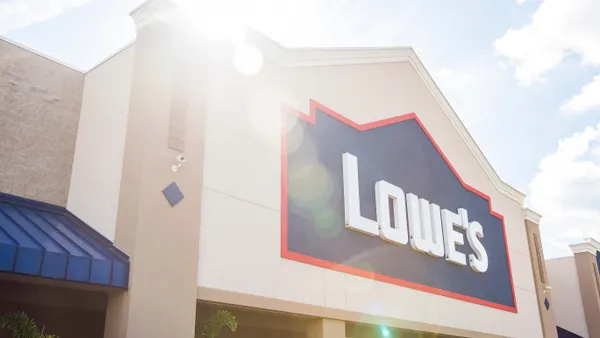Dive Brief:
- Ten retailers whose financial health rating (FHR) scores have recently and substantially declined are deemed to be "at-risk," RapidRatings CEO James Gellert told Supply Chain Dive.
- The retailers are: Toys R Us, JC Penney, Barnes & Noble, Neiman Marcus, Claire's Stores, J. Crew, Ascena Retail Group, Mattel, Sears and L Brands.
- Gellert says these retailers are stuck using old operational, logistical and distribution methods that are no longer effective in the digital, e-commerce age. They struggle to balance physical storefronts with an online presence, and are "almost handcuffed by the amount of change they need to go through, and much of this is because their operations are still tied back to a store strategy."
Dive Insight:
The research from RapidRatings reveals just how disruptive the e-commerce age has been on every level, from stock and inventory management to distribution to advertising.
Digitization and e-commerce pair with fast-changing consumer tastes, and current retailer struggles have a distinct supply chain flavor; not only are they struggling to meet consumer demand, they're struggling to get their operations in order to actually deliver what those consumers want to buy.
"The brick and mortar store used to be the literal backbone of the retail space for decades and was critical to helping retailers establish their presence, but that’s clearly not the case anymore," Gellert said. "That’s not to say all physical stores will go away — far from it. But with the new digital age, brands are being forced to revisit their entire business strategy."
Retailer H&M, whose FHR is currently at a safe 89 out of 100, has struggled a with inventory management recently and meeting consumer demands, blaming its supply chain for lagging sales. While H&M hasn't dropped into a high-risk category with a score below 50, other clothing retailers including J. Crew (FHR: 20), Sears (FHR: 19) and JC Penney (FHR: 29) are struggling mightily to stay afloat.
Then there's the supplier implication: many retailers and their suppliers aren't transparent with each other about their financial health, which can strain those relationships when one or the other starts sinking.
Gellert used the example of the recent Bon-Ton bankruptcy to illustrate. "Dissecting the recent Bon-Ton bankruptcy brings to light just how interconnected the retail supply chain can get, and how quickly things can go south when you don’t have full transparency into the financial health of your vendors, suppliers, and partners," he said. "This bankruptcy has left its largest brands, such as Michael Kors, Perry Ellis, and Ralph Lauren, with unsold inventory, fewer distribution points, and, not to mention, potential difficulty in recouping costs. A year ago, Bon-Ton had an FHR of 24, for example, putting them in our high-risk category more than 12 months before the eventually defaulted."
When one retailer defaults there can be a deadly chain reaction, a domino effect of decline in the financial health of suppliers, vendors, distributors and other connected retailers.
But there's hope; some retailers are performing well, and it's because they've overhauled their business strategy to keep up with the digital age and consumer whims.
"Industries have had to adapt to changing needs and environments since the dawn of time," Gellert said. "Many have done so with spectacular success, such as companies like Carter’s (FHR: 82) and The Children’s Place (FHR: 85), which have continuously thrived while its industry peer, Gymboree, has fallen behind."
"What’s important, though, is that companies take an honest look at their situation and be willing to make hard choices," he added. "Disruption can be painful, but it can also present opportunities for brands to set out a new path for the future."













